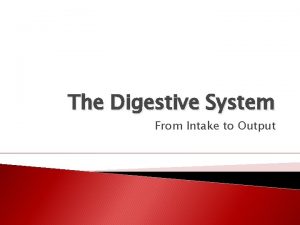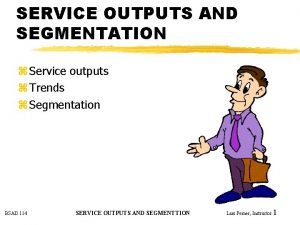Introduction to Safe Outputs Introduction to Safe Outputs







- Slides: 7

Introduction to Safe Outputs

Introduction to Safe Outputs • The aim of making outputs safe is to minimise the risk of an individual being identified, or assigning an attribute to someone, from a piece of analysis. • Statistical Disclosure Control is a key method of doing so. The Safe Access Data Professionals Handbook gives guidance for researchers, checkers, and organisations on what to look out for. • No system is 100% effective, the aim is to reduce the risk to an acceptable level.

How might a disclosure occur? • Suppose we collect some confidential information, income. The total income for observations in the data is £ 1000. • But, there are only two observations, including myself. I know my income (£ 400). • Therefore, it must be the case that the other person’s income is £ 600. • I meet the other person at an event to celebrate the data collection; and I know how much the other person earns (and they know how much I earn). • Would this still be the case if there were three observations?

SDC and Outputs • SDC is often used to produce ‘safer’ versions of datasets. • However when working with potentially identifiable data it needs to be applied to results. • Why do you think it is important to preserve confidentiality? Legal penalties Reputational damage Loss of confidence in data collection Fewer observations

Rules-based vs Principles-based Rules-based Users are given a set of fixed rules about what can and cannot be released, if the statistical output presented by the user meets the criteria it is released. Principles-based An assessment of risk takes place, and a decision is made as to whether the statistical output presented ‘safe’ to release or not? (in accordance with the Five Safes ‘Safe Output’ element). What are the benefits and limitations of these approaches?

Types of Disclosure Primary disclosure • Inferring the identity, and/or information about, a data subject from a single source of data. • Spontaneous recognition. Secondary disclosure (‘attribute’) • Deriving the identity, and/or information of, a data subjecting by combining two or more sources of information together.

Assessments for this module SDAP: Safe Analyst Training – Introduction to Safe Outputs Created by Cancer Research UK and The Health Foundation for the Safe Data Access Professionals Working Group













